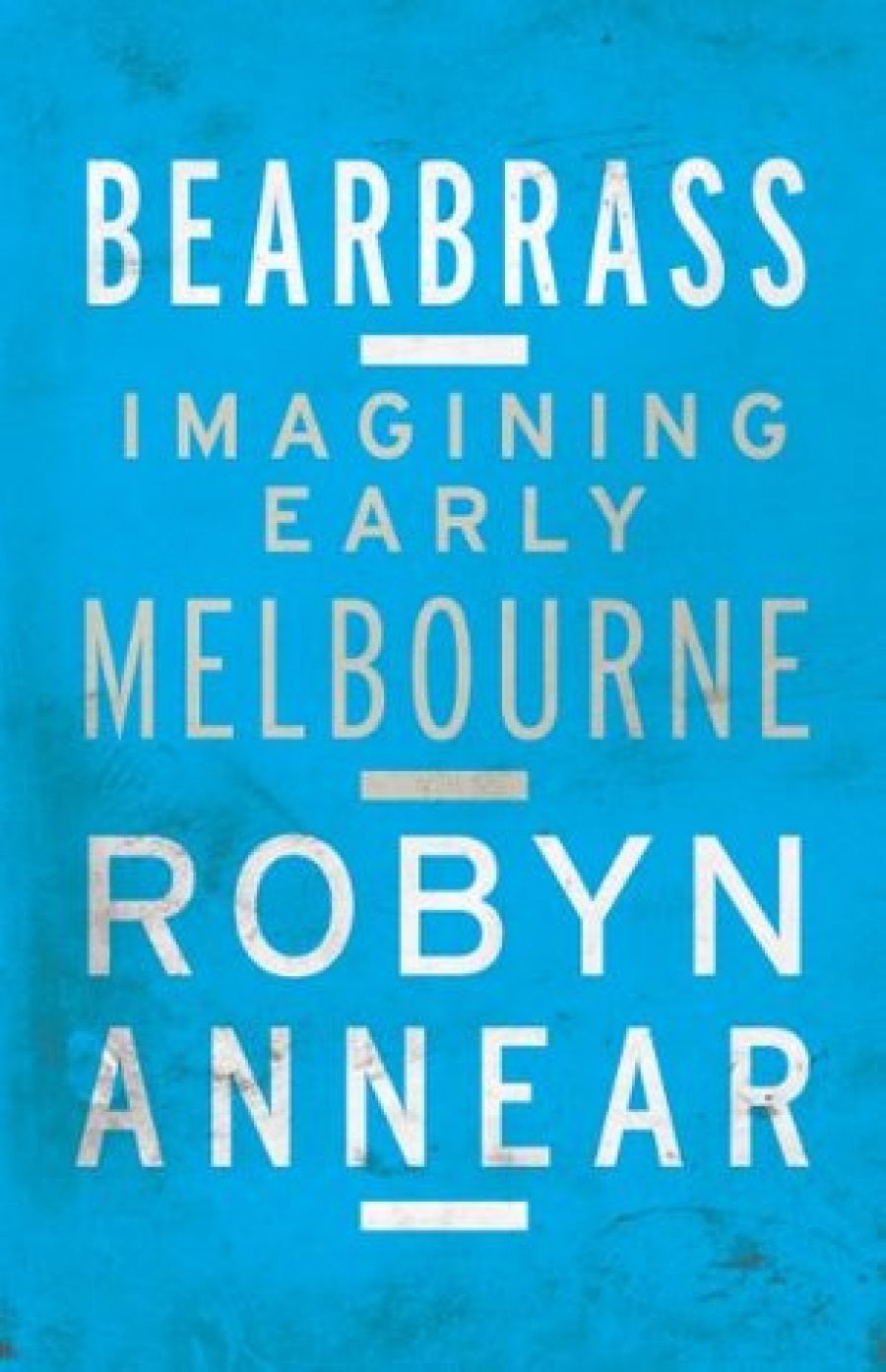
- Free Article: No
- Contents Category: Australian History
- Review Article: Yes
- Online Only: No
- Custom Highlight Text:
Some time ago, I was curious about steam cars and found an advertisement, dating from the 1920s, for the sole Victorian distributor of the Stanley Steamer. The address was Flinders Lane, the street in Melbourne which exudes more personality than most of the others combined. I discovered that the building in question had been turned into a printshop. But its origins as a motor garage were obvious. Such unprepossessing buildings as service stations survive more by good luck and stubbornness than by design. So I was strangely impressed. All the more so because Flinders Lane now boasts a boutique hotel with a swimming pool that overhangs the street. You can paddle out and look down on the traffic swimming below you like the lost city of Atlantis.
- Book 1 Title: Bearbrass
- Book 1 Subtitle: Imagining early Melbourne
- Book 1 Biblio: Mandarin, $18.95 pb, 272 pp
Part of Annear’s technique is to stand the reader at points of modern interest and demonstrate how, apart from the grid of streets, a village originally called ‘Bearbrass’ is unrecognisable when you walk around in a city called Melbourne. Southbank was a swampy turnip patch; a Baptist community used to gather in ‘Napier’s rooms’ on the site of what became the Regent Theatre; Elizabeth Street ran like a river during winter and the intersection with Collins was known as Lake Cashmore.
In 1988, an area in Leichardt Street, an unmarked laneway, was dug up as part of redevelopment. The excavation turned up relics of Bearbrass: spoons, buttons, dozens of champagne bottles, the remains of a cat. Part of the first fence in Collins Street was dug up sixty years after it was erected by the founder of Whelan the Wrecker. The souvenir served for years as a sweet-pea trellis in a backyard in Brunswick. The printing press on which Fawkner produced The Advertiser for a short time is now in the Scienceworks museum. This is the inconsequential bricolage that remains: the gleanings left behind by ordinary lives.
Bearbrass, however, is far more fascinating than digging through a tell of incidental detail. The detail, down to the rarity of pins and the shortage of change, creates an elaborate portrait. The book is richly peopled. Some of their names are familiar. Georgiana McCrae and Redmond Barry have been the subject of recent biographies (the former by Brenda Niall, and the latter by Ann Galbally). Both McCrae and Edmund Finn (writing as ‘Garryowen’) are renowned diarists. Rolf Boldrewood, the author of Robbery Under Arms, arrived in Bearbrass as a boy in 1840. And so on. But Annear has also rescued dozens of others who appear briefly in court lists or in the endless gossip of the four newspapers which circulated in Bearbrass.
Some of the patterns of behaviour in Bearbrass have well and truly lived on. One is the uncomfortable proximity of humour and tragedy which we take so much in our stride. A man and his horse drowned one night in Bearbrass in Elizabeth Street and somebody proposed to the mayor that the council should install lifebuoys ‘the whole length of the post office coast’. John Hoosan, an inept constable, was a figure of innocent fun in a community where police brutality and corruption were rife. There was concern about what is now called ‘domestic violence’ but papers were more than capable of reporting court appearances of ‘wife beaters’ largely for laughs. Among any number of clues for survival, locals borrowed any place names, including ‘Bearbrass’ itself, from Aboriginal people. But that didn’t stop them plying the Aboriginal population with grog because they were so entertaining when drunk.
Bearbrass is a vibrant historical narrative. It stops suddenly on the eve of the goldrushes which ‘changed everything’. Gold coincided with The Separation Bill which parted Port Phillip from New South Wales. The bill was passed by the British Parliament in August, 1850. It was fourteen weeks before word reached Melbourne:
English newspapers dated 4 August were brought up from a ship that had just come into port, to the desk of Edmund Finn (alias ‘Garryowen’), a reporter from the Herald. Late in the afternoon, he began leafing through them looking for items to include in the English News columns of the next day’s edition. Then on page five of The Times (sandwiched between an amendment to the Dog Act and an advert for a virility cure), his eye lit on a short paragraph stating that the Separation Act had been passed. Finn hauled the Herald’s compositor out of the pub and had him set an Extraordinary edition of the paper, using the biggest type he could find ... Next day, every building in the metropolis was decked out with bunting.’
Then, as now, the least ripple on the other side of the world can become a tidal wave by the time it reaches these shores. A footnote reminds us that Finn worked in 1850 for the same Herald which Rupert Murdoch culled in 1991.


Comments powered by CComment